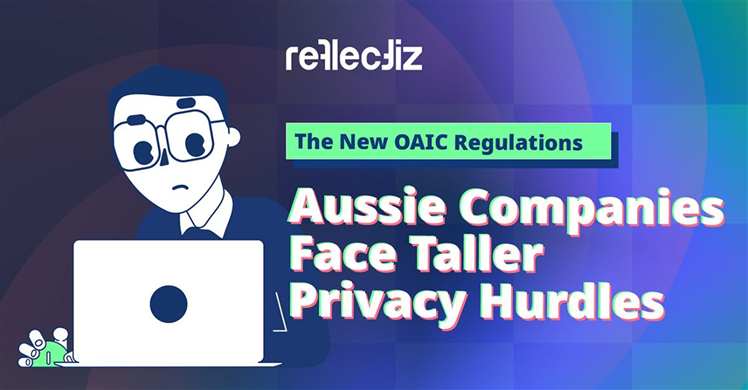With maximum penalties now reaching AUD $50 million, businesses serving Australian customers face urgent compliance demands. A newly published whitepaper maps out the most effective compliance path for both domestic and international organizations.

Rising Privacy Concerns Drive Regulatory Action
The Office of the Australian Information Commissioner (OAIC) is intensifying its data protection enforcement on companies with Australian customers, regardless of location, driven by a survey revealing 70% of Australians feel they've lost control of their personal data. Their updated priorities target stricter scrutiny of third-party risks and online tracking, areas where businesses often underestimate exposure. The regulator notes that misconfigured tracking pixels and faulty consent mechanisms can inadvertently share user data, leading to the same privacy loss as malicious attacks.
The OAIC aims to prevent both accidental and deliberate data breaches. This heightened focus challenges any organization serving Australian customers with a turnover of $3 million or more, as the Australian Privacy Act 1988 (APA) has extraterritorial reach.
A Privado report found 75% of top US and UK websites fail CPRA and GDPR compliance. This widespread non-compliance suggests Australian businesses likely face similar struggles meeting their APA obligations.
Steep Financial Penalties Create Urgency
At the same time, maximum civil penalties for APA breaches have skyrocketed:
For organisations:
- Up to $50 million
- Or 3x the value of the benefit obtained
- Or 30% of adjusted turnover (whichever is greater).
For individuals:
- Up to $2.5 million (this is the maximum civil penalty for individuals committing serious repeat offences and is not levied for every single offence.)
But a new [white paper] addresses this complex challenge. It fleshes out the background and offers practical steps to compliance for businesses collecting Australian customer data.
Third-Party Tracking: The Hidden Compliance Risk
For instance, in the case of pixel-tracking, it looks at how ad tech is behind much of the over-collection and retention of personal information that the OAIC wants to police more strictly. Companies using pixel tracking technologies on their websites don’t typically have visibility and control over them because they belong to external vendors, like TikTok or Meta.
[The white paper] finds that the quickest and most effective route to APA compliance in this case is deploying a tool that constantly updates a map of all third-party scripts, pixels and cookies, monitors them for suspicious changes and alerts the user accordingly.
A Strategic Approach to Third-Party Risk Management
This approach, and any others, should be used as part of an overall TPRM strategy. TPRM is a continuous process that cycles through five crucial stages: planning, due diligence, contracting, ongoing monitoring, and termination with each vendor. It’s an end-to-end approach that makes it easier for the business to catch vulnerabilities.
The APA is founded on 13 Australian Privacy Principles (APPs) that set standards for handling citizens’ personal information, and these requirements are what companies need to meet.
Building a Comprehensive Compliance Framework
While technical monitoring provides crucial visibility into third-party risks, APA compliance requires a multi-layered strategy. Organizations should complement monitoring tools with:
- Legal frameworks - engaging Australian privacy law specialists to review obligations
- Governance structures - appointing Data Protection Officers and establishing privacy committees
- Staff training programs - ensuring all teams understand data handling requirements
- Vendor contract updates - including specific APA compliance clauses in all third-party agreements
This holistic approach ensures compliance extends beyond technical detection to include prevention and proper response protocols.

APP-by-APP Compliance Summary
APP 1: Transparent Vendor Management
Establish comprehensive monitoring and governance frameworks to maintain complete visibility and control over vendor data practices and script behaviors.
APP 3: Preventing Data Over-Collection
Implement proactive data governance with regular audits and technical monitoring to ensure you only collect what you actually need and can justify.
APP 6: Controlling Use and Disclosure
Create ironclad consent management systems that align your actual data sharing practices with what you tell users you're doing.
APP 7: Direct Marketing Consent Requirements
Build marketing compliance into your business DNA with proper consent, clear opt-outs, and continuous monitoring across all customer touchpoints.
APP 8: Offshore Transfer Safeguards
Protect international data transfers through contractual safeguards, adequacy assessments, and technical monitoring of cross-border data flows.
APP 11: Real-Time Security Protection
Deploy comprehensive security frameworks that combine human training, technical monitoring, and incident response to protect against evolving threats.

Meeting Breach Notification Requirements
A dedicated privacy dashboard can significantly help businesses satisfy other APPs and the Data Breach Notification Scheme requirements too. This says that breaches need to be reported within a 30-day window, so the privacy dashboard provides early alerts of suspicious client-side activity along with built-in report generation for easier auditing.
[Download the whitepaper here] to get valuable OAIC compliance insights and guidance on keeping Australian customer data safe.


.png&h=140&w=231&c=1&s=0)
.png&h=140&w=231&c=1&s=0)






 Digital NSW 2025 Showcase
Digital NSW 2025 Showcase







_(17).jpg&h=271&w=480&c=1&s=1)




_(1).jpg&h=140&w=231&c=1&s=0)



